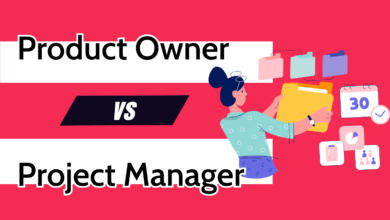How — and Why — These Product and Design Collaborate Effectively

For Director of Product Management Annie Kim, driving collaboration between product and design teams isn’t about simply communicating effectively — it’s about having the right people in the conversation.
That’s why Kim and her peers at Elevate K-12 bring design leaders into the fold from ideation to delivery, ensuring that they get to influence strategy and decision-making throughout the product development process. In doing so, her team is able to cultivate the type of environment needed to achieve the company’s ultimate goal: “to enable high-quality, live teaching for every learner in the United States.”
“Ultimately, success in product and design collaboration is nurtured by a culture of openness, adaptability and a relentless pursuit of excellence,” Kim said. “We navigate challenges together and deliver life-changing solutions for our users.”
The inevitability of roadblocks is one of the main reasons why design and product teams need strong collaboration. But with the right culture and practices in place, hurdles can be easily overcome.
When Senior VP of Engineering Ojas Sitapara and his teammates developed Acrisure Innovation’s medical insurance quoting platform, they encountered various challenges, such as creating dynamic charts for diverse data sets. According to Sitapara, his team’s ability to maintain effective collaboration despite these setbacks came down to
“constant communication, brainstorms and a tight feedback loop with power users led to our success.”
As teams encounter their own challenges throughout the collaborative process, they learn many lessons, some of which have the power to change one’s perspective. At Prosodica, Product Manager Sara Swartz has seen her team hone the art of effective teamwork, whether that’s through setting expectations or developing a solid design review process. And along the way, she has discovered the importance of pivoting — and improving.
“I’ve learned to become comfortable with adjusting our process and challenging myself and others to consistently consider, ‘How can we do this better?’” Swartz said.
Below, Kim, Sitapara and Swartz describe how their teams drive collaboration between product and design, the challenges they’ve overcome and the lessons they’ve learned along the way.
Designed to be used inside a school, Elevate K-12 connects certified teachers with classrooms in need of instructors due to teacher absences and staff shortages.
What is a recent example of a successful collaboration between Elevate K-12’s product and design teams?
Our team recently collaborated on enhancing our live classroom environment. As part of our product lifecycle, we initiated a discovery sprint that involved product, design, engineering and all customer success teams. The pivotal aspect of this teamwork was actively listening to our customers through various channels and conducting contextual observations of classroom and teaching environments. This approach involved gathering both qualitative and quantitative research to inform every aspect of our work.
During this process, we faced various roadblocks, such as school scheduling limitations based on the time of year. Particularly around the holidays, schools are preparing to wrap up and start their break, requiring us to be sensitive to the academic year’s rhythms, especially while working with K-12 institutions. Given the immense value we place on our customer relationships, we successfully collaborated with our partnering schools to gather the necessary insights despite these challenges.
What strategies underpin your product and design collaboration?
Our product and design collaboration is based on several key strategies to ensure success. We ground ourselves in design principles, empathy, iterative ideation and customer-centric problem-solving. We interlace product, design and engineering goals with priorities and timelines as part of the roadmapping process.
To foster successful collaboration, we’ve created discovery sprints to bring together diverse perspectives and subject matter experts from product managers, designers, engineers and customer success managers. These sessions not only stimulate creativity, but also encourage cross-functional collaboration. They enable us to synergize our skills and knowledge effectively.
“We ground ourselves in design principles, empathy, iterative ideation and customer-centric problem-solving.”
What advice would you give to product teams that want to keep design at the heart of their work?
Encouraging and evangelizing a collaborative environment where designers, engineers, product managers and other stakeholders work closely together from ideation to delivery is one of the key strategies that will always bring design to the table. Something that I’ve learned is the importance of implementing customer feedback loops to understand customer needs and pain points consistently to directly inform design decisions. Those design decisions will help you iterate and refine your product.
Another key strategy is to partner with and empower design leaders to influence strategy and decision-making. Having your design leaders at the table ensures that design considerations are integrated into high-level discussions and product roadmaps. Lastly, recognizing that design is an ongoing process and not a one-time touchpoint is vital to customer success and the business.
Founded in 2005, Acrisure Innovation is an insurance broker that delivers insurance and risk management services and solutions.
What is a good example of a successful collaboration between Acrisure Innovation’s product and design teams?
In developing our medical insurance quoting platform, collaboration between product and design teams was pivotal, notably during the conceptualization of the benchmarking tool. Our annual process involved collecting plan data for a seamless shopping experience. We discovered that customers sought information from “companies like me” to make a final purchase. We explored our dataset and found untapped information we were able to present at the time of need.
To integrate design and product seamlessly, meticulous planning and continuous collaboration were crucial. Synchronized schedules, workshops, interviews and check-ins prevented divergence, fostering a holistic understanding for the entire team.
Our team faced roadblocks, but agility and innovative solutions prevailed. Standardizing insurance plan data presented a major hurdle, requiring a robust internal and customer-centric framework. Design challenges included creating dynamic charts for diverse data sets. Data gaps for new states were addressed through an unexpected partnership, supplementing missing data.
SITAPARA’S TIPS FOR PLACING DESIGN AT THE CENTER
- Spend time with customers, ask “why?” and seek diverse insights.
- Educate the entire team on UI/UX basics to demystify the design process and enhance communication and collaboration.
- Establish a cadence for design reviews to align with the product vision, keeping the team engaged and ensuring milestones are met.
- Swiftly collect and act on user feedback through various channels, as this fosters a sense of customer involvement and continually enhances the design.
- Customer intentions may differ from behavior, so test hypotheses through minimum viable products and gather quantitative data to align the product with user expectations.
- Recognize personal biases, as design solutions based on personal preferences may not resonate with users.
Are there rituals, routines, tools or collaborative cadences that the team relies on during the process?
Effective collaboration between product and design is vital for customer-centric solutions. We integrate design early, emphasizing collaboration during prototyping for firsthand insights and throughout the systems development lifecycle. A robust feedback loop fosters open communication, cultivating a culture of shared accountability.
For design thinking, we gain deep customer empathy through interviews and observation, ensuring a focus on the core problem statement. Roadmapping involves rapid experiments with customers for precision. During the post-launch phase, we prioritize iterative improvements based on data and customer feedback, perceiving launches as continuous improvement starting points.
In our agile team, we use scrum for dynamic workflows, which includes stand-ups, planning, retros and demos. Collaborative tools like Slack enable real-time communication, while Jira ensures project transparency. Design collaboration is seamless with Figma or InVision. Ad-hoc meetings provide flexibility, addressing emerging issues and fostering creativity. This agile structure ensures effective communication and adaptability in our product development process.
Prosodica provides an AI-driven voice and speech analytics engine that businesses use to gain deep insights into customer experiences, employee engagement and customer satisfaction.
Describe the development of a new feature that relied heavily on successful collaboration between Prosidica’s product and design teams.
Prosodica is a voice and speech analytics engine that provides conversational insights to support continuously better call center interactions. We recently designed a new homepage to enable our users to leverage Prosodica’s call center data to make data-driven decisions. The homepage supports at-a-glance analytics and provides actionable insights to improve customer interactions.
This initiative required ongoing collaboration between product and design to ensure our solution balanced data best practices while supporting an optimal user experience. Additionally, user stories are an effective way to keep product, design and development teams aligned on the value we want to provide to users throughout the design and development process.
What strategies underpin your product and design collaboration?
It’s important to build a consistent communication cadence that works for the unique structure of the team. It may take some trial and error, but creating a collaborative process that integrates design into product development will generate immeasurable value for our product. Allocating time for product and design collaboration helps put UX design at the heart of product development and keeps the team engaged, connected and accountable.
At the beginning of a new initiative, we ensure the team is aligned on the unique needs, goals and challenges of the end user. From there, we generate “how might we” statements, which are the building blocks for effective UX design. During the discovery phase, we regularly leverage Figma and Miro, which are great collaborative tools that increase team engagement. In addition to product and design collaboration, our team regularly meets with the development team to review prototypes and assess technical feasibility early on in the design process.
“At the beginning of a new initiative, we ensure the team is aligned on the unique needs, goals and challenges of the end user.”
What advice would you give to product teams that want to keep design at the heart of their work?
In addition to building consistent communication paths between product, design and development, it’s essential to define expectations for those interactions. Setting expectations is critical, because feedback and responsibilities vary widely depending on where you are in the process.
Our UX team has created a design review process that provides project context, a summary of core design changes and an outline of feedback expectations. This design review process has helped minimize scope creep and kept collaboration sessions focused. Checking in with the team and collecting feedback on what’s working and what isn’t is part of the journey to building a design-forward product that supports an amazing user experience.



